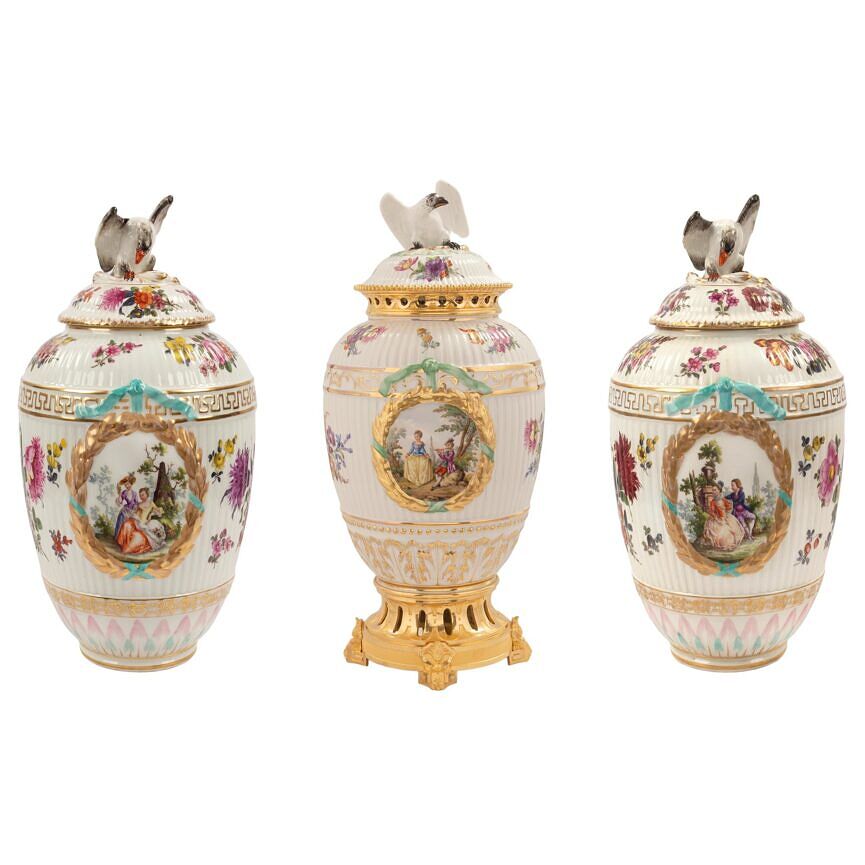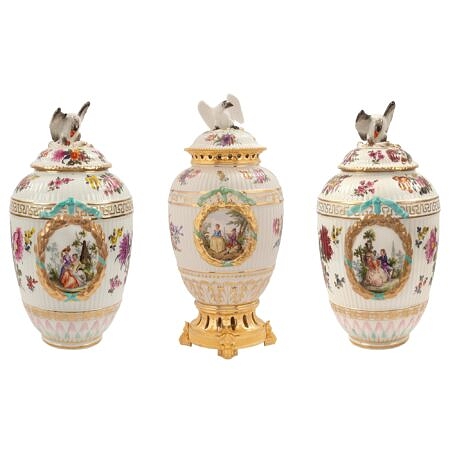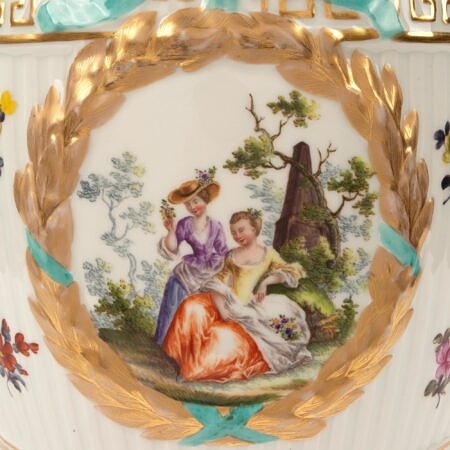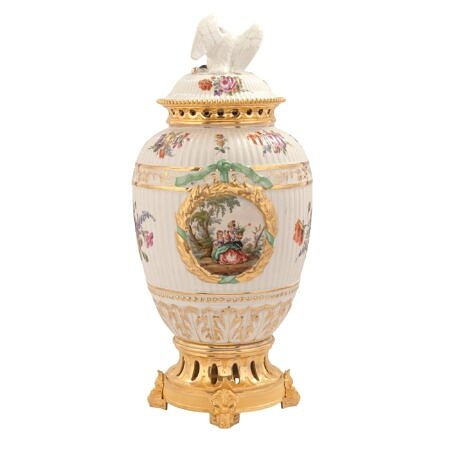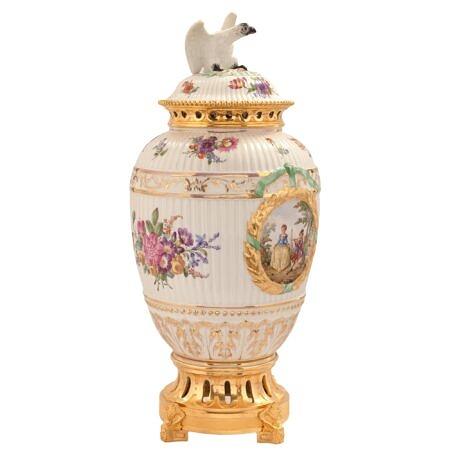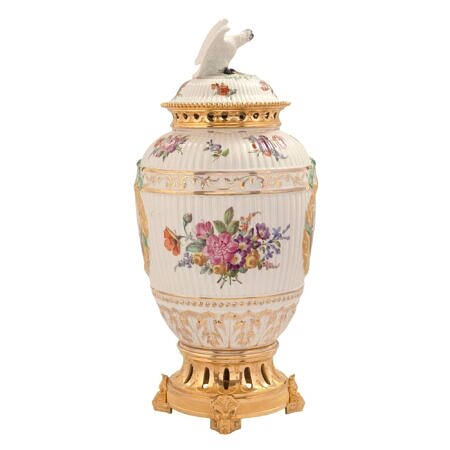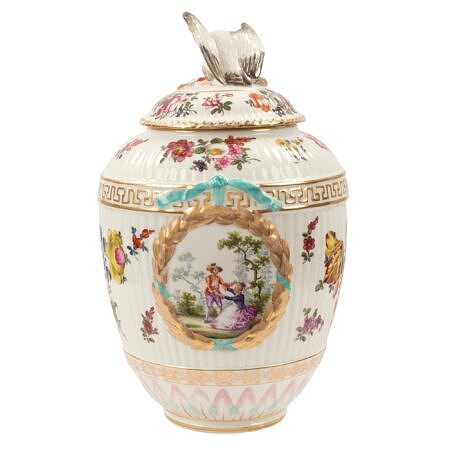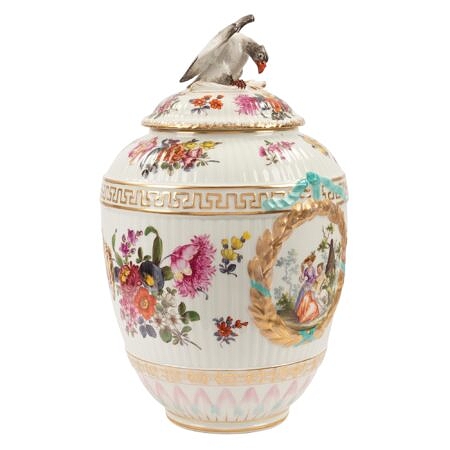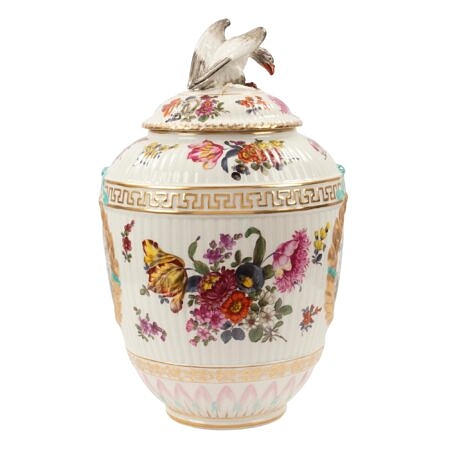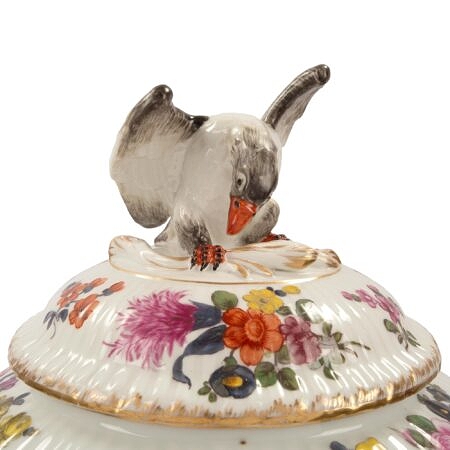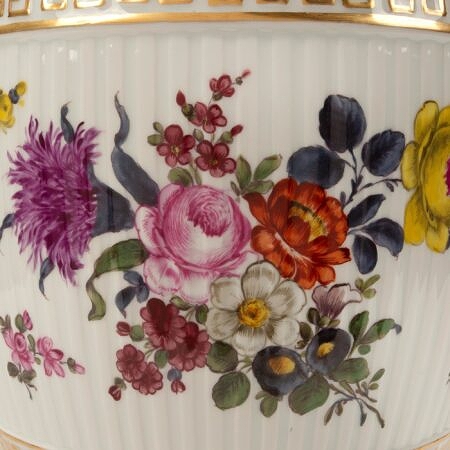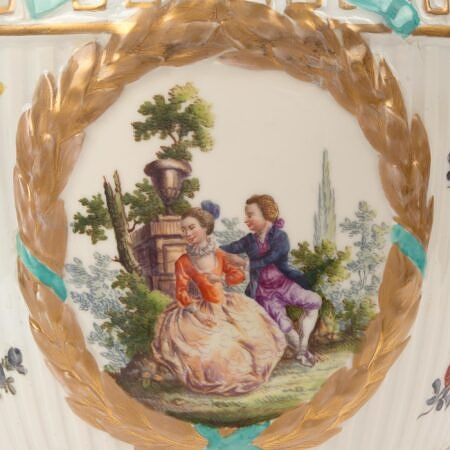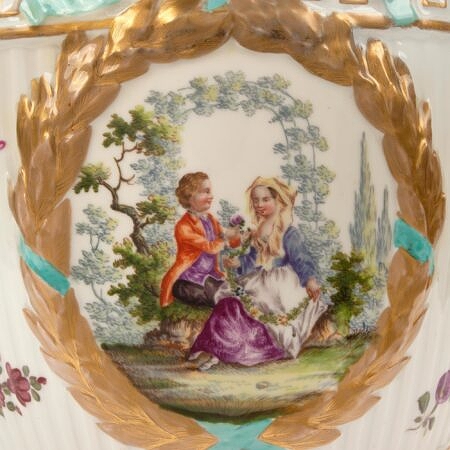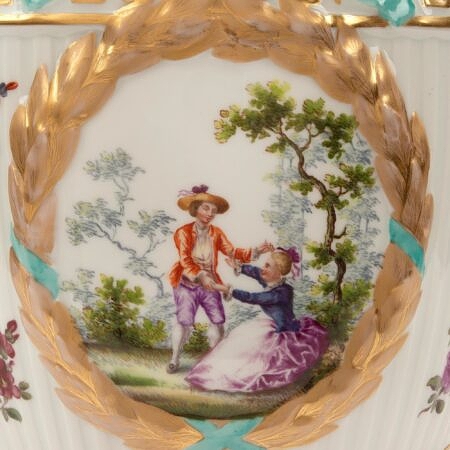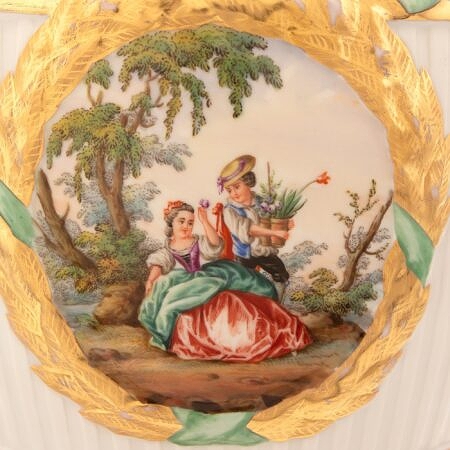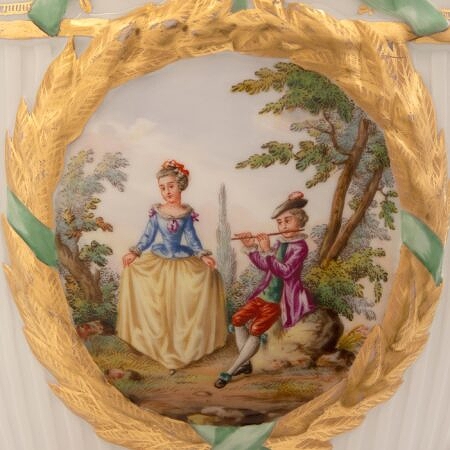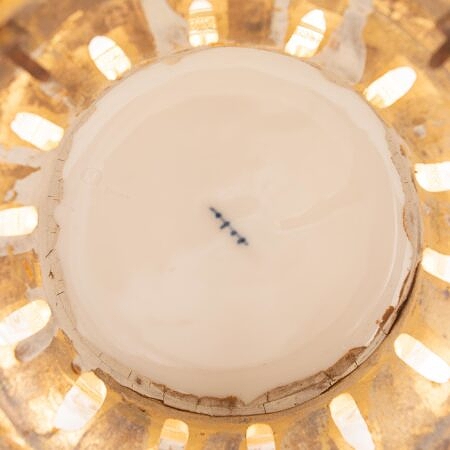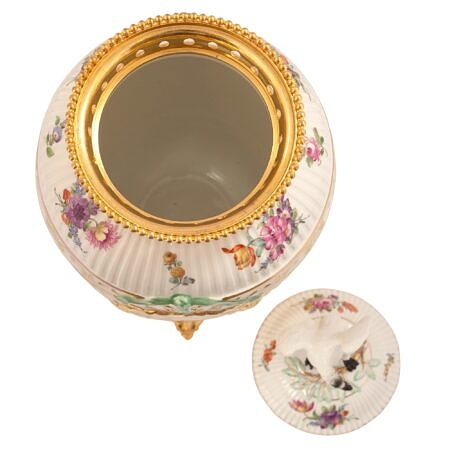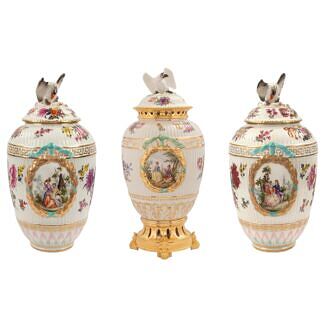A complete set of three German 19th century KPM porcelain garniture set
List: $22,500.00
A fine and most charming complete set of three German 19th century KPM porcelain and ormolu garniture set. The central urn is raised by an elegant pierced ormolu base with fine foliate feet and a pierced and beaded rim. The... — Read More
A fine and most charming complete set of three German 19th century KPM porcelain and ormolu garniture set. The central urn is raised by an elegant pierced ormolu base with fine foliate feet and a pierced and beaded rim. The body displays a beautiful lightly fluted design throughout with fine gold foliate patterns and colorful central scenes of young men serenading beautiful maidens. Each urn display a fine removable lid with a wonderfully executed bird perched on top. The pair of slightly smaller urns display a similar shape and design, with fine foliate designs and beautiful central hand painted scenes, framed within a gilt berried laurel band. — Read Less
- Item # 10232
-
H: 16 in D: 8.75 in
H: 41 cm D: 22 cm
- Germany
- 19th Century
- Ormolu, Porcelain
- Neo-Classical st. Read More
- KPM - Königliche Porzellan-Manufaktur Berlin Read More
Founded in 1763 by Frederick II of Prussia, who bought the factory from its previous owner, Johann Ernst Gotzkowsky. Frederick II greatly admired the factory’s “white gold,” a type of porcelain so fine and translucent that it closely mirrored the high-quality porcelain made in that period. He invested large sums of money into the company and granted it the use of the royal scepter as its emblem. He also commissioned many KPM porcelain objects to be made in the Rococo style for his palace.
From the company’s founding in 1763 to the abdication of Emperor William II in 1918, KPM was owned by seven kings and emperors. KPM porcelain made during this period reflects not only the fashions of the time but also Prussian royal taste. Technological advances led to modern modes of production and design, but KPM continued to value craftsmanship and KPM artists devoted time and care to produce unique, handmade objects.


